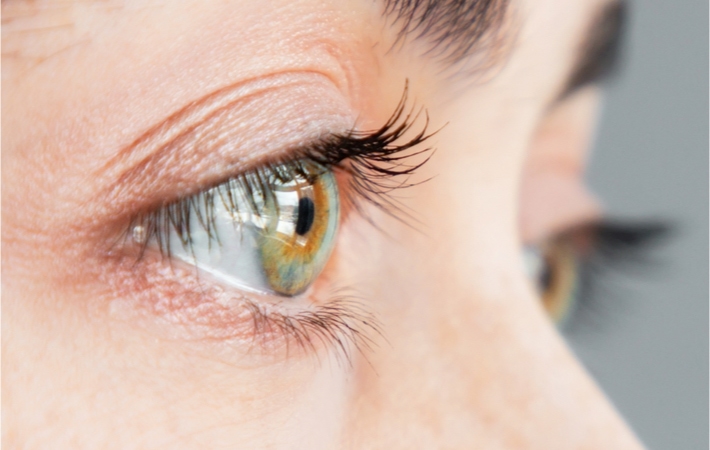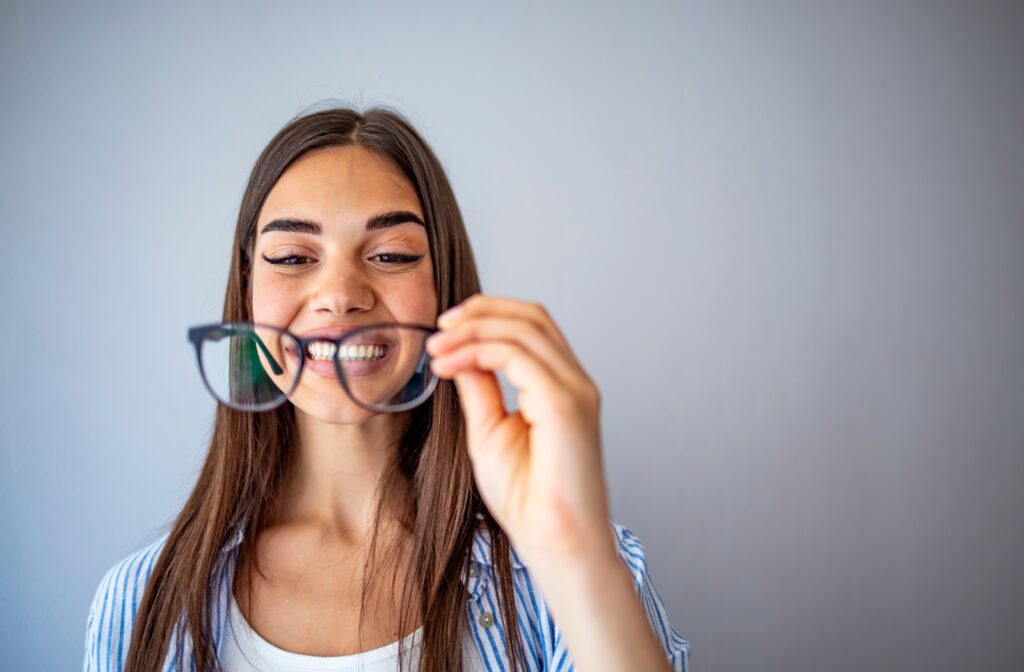Myopia Insight
Your vision and your ocular health are inseparable. Keeping an eye on vision changes is essential for adult eye exams and pediatric eye exams. Although myopia is typically discussed for its impacts on sight, it’s also a big part of your health and lifestyle.
Unfortunately, without a time machine, completely reversing myopia isn’t possible. However, methods of myopia management are available to correct vision problems. Some treatment options can permanently improve vision, while others focus on preventing worsening symptoms.
Booking an appointment with your optometrist is the best way to find out more about what options can work for you. Your eyes are unique, and your eye care team can personalize your eye care to match your one-of-a-kind ocular system.
Causes
Myopia or nearsightedness is a refractive error where close vision is unaffected, but distance vision is blurred. The condition is caused by an elongated eye or cornea shape, which changes how eyes focus light. When our eyes incorrectly refract light, it impacts our visual acuity.
There is no single apparent cause for myopia. However, some risk factors and conditions can lead to myopia. For example, although genetic factors aren’t confirmed, you’re more likely to develop myopia if one of your parents did.
Some notable conditions share symptoms with myopia and can indicate worsening myopia, including:
- Night myopia (vision only worsens in poor light)
- Cataracts (vision changes are often an early indicator)
- Changing blood sugar levels for people with diabetes
- Excessive near-vision work (typically computers, reading)
Digital eye strain or computer vision syndrome can temporarily evoke symptoms of a refraction error, including myopia. However, if untreated, digital eye strain can also worsen myopia. The condition is caused by too much time with digital screens, such as computers, tablets, phones, and e-readers.
Common symptoms of digital eye strain include:
- Eyestrain
- Dry eyes
- Headaches
- Blurred vision
- Neck, shoulder, or back pain
You might have tried the 20-20-20 rule but don’t notice any improvements. In that case, it’s best to book an eye exam to assess your eye health and visual acuity.
Prevention
Although reversing myopia isn’t an option, prevention can help lessen the symptoms of myopia. Unfortunately, preventative eye care can’t predict the future of your vision. Still, it can use indicators to foresee potential risks and possible solutions.
By booking regular eye exams, your eye care team can look at your vision and ocular health trends. If symptoms are diagnosed earlier, management can begin earlier, potentially lessening the condition’s progression.
Adults should book a comprehensive eye exam at least every 2 years. In addition, children should have an eye exam annually once they reach school age.
Here are some sight safety tips you can practice to prevent worsening myopia and protect your eye health:
- Limit screen time
- Take breaks from close-up activities
- Don’t work or read in dim light
- Wear sunglasses outside
- Use protective eyewear (sports, hobbies, etc.)
- Enjoy outdoor activities
- Avoid or stop smoking
Nutrition can also play a part in supporting your vision. Although leafy greens won’t reverse degrading vision, nutrient-rich food can help the normal function of your visual system. It can also reduce risk factors for certain eye diseases and conditions. In particular, look for vitamin C, vitamin E, lutein, zeaxanthin, zinc, and essential fatty acids.

Managing Myopia
Methods for managing myopia vary depending on the severity of the condition, comfort level, and lifestyle. Common treatment and management options include eyeglasses, contact lenses, laser eye surgery, orthokeratology (ortho-k), intraocular lens implant, or therapy for children’s vision.
Someone with low myopia might rarely need their corrective lenses, so owning a pair of glasses or buying contacts for certain activities is part of their lifestyle. On the other hand, someone with high myopia might require glasses or contacts consistently and choose laser eye surgery to correct their vision.
Most management options for myopia are flexible and are available for any lifestyle. However, if vision loss or eye care is a concern, your optometrist might work with you to find methods to protect your eye health.
Myopia control is most effective in children, as their eyes and visual skills are still developing. Therapy for children’s vision might use low-dose atropine drops, orthokeratology (night contact lenses), or peripheral defocus contact lenses.
Talk About Myopia
Your eye care team is responsible for a lot of your eye care, but the choices are yours. Most of the symptoms of myopia are experiences, not just something an eye doctor can detect.
If you feel or experience vision changes, you have the choice to talk about your ocular health. Suppose your child is voicing concerns over vision, near-vision activities, or headaches. In that case, it might be their way of talking about their visual abilities. Don’t ignore the risks of myopia. You can get ahead of worsening symptoms and protect your vision. If you’re ready to talk about your eye care, book an appointment with your optometrist.



